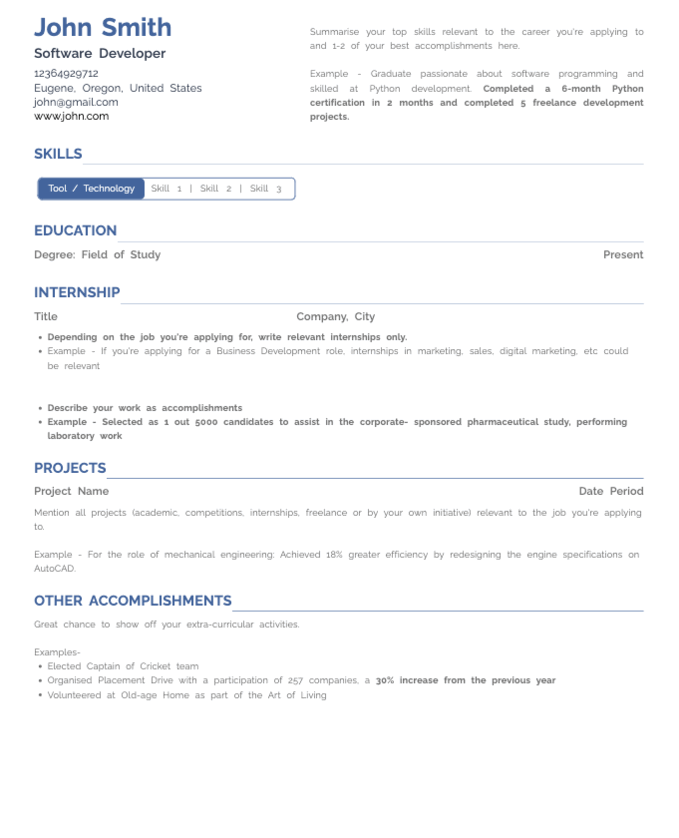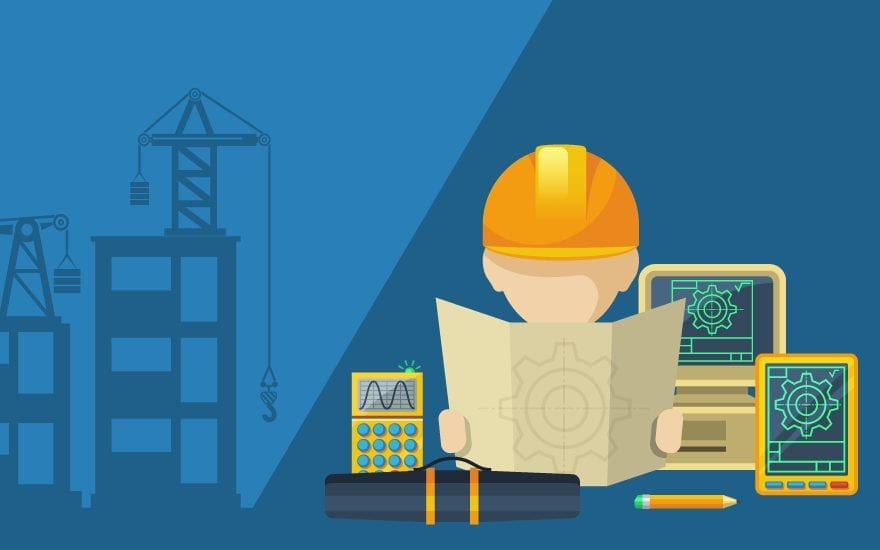12+ Tricks to Build a Resume For Network Engineer Jobs
7 min read

Are network engineer jobs in demand?
You might come across this question if you are willing to become a network engineer in 2023.
The answer is ‘Yes’, the demand for network engineers is continuously growing with the enhancement of the IT sector across the country.
Considering this, we are here with all the essential instructions to frame a bright career as a network engineer in 2023. First, you will need a diploma or bachelor’s degree in computer science or network engineering.
Post that, you will need a professional resume for network engineer jobs. Here you will get answers to every fundamental resume-building query for network engineer jobs, which include:
- What is a network engineer?
- What are the fundamental responsibilities of a network engineer?
- How can a job description help in building a network engineer resume?
- What are the suitable resume formats for network engineer jobs?
- How to build a resume for network engineer jobs?
The network engineer resume-building process will take a lot of your time and focus. Hence, if you are in a hurry, use HyreSnap Online Resume Builder.
It is an AI-powered resume builder specialising in building ATS-friendly resumes in minutes.
For now, let's take a look at how you can build a network engineer resume on your own:
A network engineer is a professional who designs, implements, maintains, and troubleshoots computer networks within an organisation. They are responsible for ensuring the smooth operation and optimal performance of the network infrastructure, which includes hardware, software, and communication protocols.
The fundamental responsibilities of a network engineer can vary depending on the organisation's size, industry, and specific requirements. However, here are some common responsibilities associated with the role:
- Network Design and Planning: Network engineers are responsible for designing and planning computer networks to meet the organisation's requirements. This involves determining the network architecture, selecting appropriate hardware and software components, and considering factors like scalability and security.
- Network Installation and Configuration: Network engineers install and configure network equipment, such as routers, switches, firewalls, and wireless access points. They set up network connections, IP addresses, and ensure proper integration of network components.
- Network Monitoring and Performance Optimization: Network engineers monitor network performance, analyse network traffic patterns, and proactively identify and resolve issues that may impact performance. They use network monitoring tools and diagnostic techniques to ensure optimal network operation.
- Network Security: Network engineers play a critical role in maintaining network security. They implement security measures such as firewalls, intrusion detection and prevention systems, virtual private networks (VPNs), and access controls to protect the network from unauthorised access, data breaches, and other security threats.
- Troubleshooting and Problem Resolution: When network issues arise, network engineers are responsible for diagnosing and resolving them. They use their knowledge of networking protocols, tools, and troubleshooting techniques to identify the root cause of problems and implement appropriate solutions.
- Network Maintenance and Upgrades: Network engineers perform routine maintenance tasks, including software updates, patches, and firmware upgrades for network equipment. They also plan and execute network upgrades to accommodate changing needs and new technologies.
- Documentation and Reporting: Network engineers document network configurations, changes, and troubleshooting procedures. They create and maintain network diagrams, inventory lists, and documentation of network-related processes. They also prepare reports on network performance, security incidents, and recommended improvements.
- Collaboration and Technical Support: Network engineers collaborate with other IT teams, such as system administrators, database administrators, and software developers, to ensure smooth integration and operation of network services. They provide technical support and guidance to end-users and assist in resolving network-related issues.
- Stay Updated on Networking Technologies: Network engineers continuously update their knowledge and skills to keep up with advancements in networking technologies, industry best practices, and emerging trends. They stay informed about new networking protocols, security vulnerabilities, and tools to enhance their expertise.
These responsibilities highlight the core tasks associated with network engineering. However, it's important to note that the specific responsibilities may vary depending on the organisation's structure, networking infrastructure, and industry requirements.
A network engineer job description can help you craft a technically strong resume for network engineer jobs in 2023.
It will help you understand the job responsibilities and give you technical terms to add to your resume.
Below you can see a network engineer job description example in which we have highlighted the technical terms.
Network Engineer Job Description Example:
We seek a skilled network engineer to join our team and contribute to designing, implementing, and maintaining our organisation's computer networks. The network engineer will work closely with cross-functional teams to ensure reliable network connectivity, optimal network performance, and secure data transmission. The ideal candidate should have a strong background in network engineering, excellent problem-solving skills, and a deep understanding of networking protocols and technologies.
Responsibilities:
>Design and implement network infrastructure based on organisational requirements, ensuring scalability, security, and reliability.
>Configure and install network equipment, including routers, switches, firewalls, and wireless access points.
>Monitor network performance, analyse network traffic patterns, and troubleshoot network issues to ensure optimal operation.
>Implement and maintain network security measures, including firewalls, intrusion detection and prevention systems, and access controls.
>Conduct regular network maintenance tasks, such as software updates, patches, and firmware upgrades for network devices.
>Collaborate with other IT teams to integrate network services with system components, applications, and databases.
>Provide technical support and guidance to end-users, resolving network-related issues and ensuring customer satisfaction.
>Create and maintain network documentation, including network diagrams, configurations, and troubleshooting procedures.
>Stay updated on emerging networking technologies, industry trends, and best practices through self-learning and professional development.
Qualifications and Skills:
>Bachelor's degree in computer science, information technology, or a related field.
>Proven experience working as a network engineer or in a similar role.
>In-depth knowledge of networking protocols, such as TCP/IP, DNS, DHCP, and routing protocols (e.g., OSPF, BGP).
>Strong understanding of network security principles and best practices.
>Hands-on experience with network equipment, including Cisco, Juniper, or other industry-leading vendors.
>Familiarity with network monitoring and management tools.
>Excellent problem-solving and analytical skills to diagnose and resolve network issues.
>Strong communication and interpersonal skills to collaborate effectively with cross-functional teams and end-users.
>Relevant certifications such as CCNA, CCNP, or JNCIA are highly desirable.
When building a network engineer resume, choosing a format that effectively highlights your skills, experience, and qualifications in the field is important.
Here are three effective resume formats for network engineers:
Reverse Chronological Format
The reverse chronological format is the most common and widely used resume format. It focuses on presenting your work experience in reverse chronological order, starting with your most recent job and working backward. This format is suitable if you have a consistent work history in network engineering and want to showcase your career progression.
Combination Format
The combination format combines the elements of both the chronological and functional formats. It allows you to highlight your skills and qualifications while still showcasing your work experience. This format is suitable if you want to emphasise specific skills and achievements while providing a chronological overview of your work history.
Functional Resume Format
The functional resume format is an alternative to the traditional chronological format. It focuses more on your skills, abilities, and accomplishments rather than your work history. This format is particularly useful if you are changing careers, have gaps in your employment history, or want to highlight specific skills relevant to your selected job.
Building a strong network engineer resume involves several key steps. Here's a guide to help you create an effective resume:
Understand the Job Requirements
Read the job description thoroughly to understand the specific skills, qualifications, and experience employers seek in a network engineer. This will help you tailor your resume accordingly.
Choose the Right Format
Select a resume format that best highlights your skills and experience. The chronological or hybrid format is commonly used for network engineer resumes. The chronological format emphasises your work history, while the hybrid format combines skills and experience in a functional section.
Contact Information
Include your full name, phone number, email address, and LinkedIn profile or professional website (optionally). Make sure your contact information is accurate and professional.
Resume Summary/Objective
Write a compelling summary or objective statement highlighting your qualifications and career goals. Summarise your experience, skills, and achievements concisely and impactfully.
Skills Section
Create a dedicated section to showcase your technical skills. Include relevant networking skills such as routing and switching, network protocols (TCP/IP, DNS, DHCP), network security (firewalls, VPN), network monitoring and troubleshooting, network design, and any other relevant certifications (CCNA, CCNP, JNCIA, etc.).
Professional Experience
List your work experience in reverse chronological order, starting with your most recent or current position. Include the company name, job title, employment dates, and a brief description of your responsibilities. Focus on achievements and specific projects demonstrating your skills and contributions to the network infrastructure.
Education
Include your educational background, including degrees, certifications, and relevant coursework. Mention any certifications you have earned, such as Cisco, Juniper, CompTIA, or other industry-recognized certifications.
Additional Sections
Add additional sections to showcase your relevant achievements and involvement in the field. This could include projects, publications, technical presentations, professional affiliations, or volunteer work. Be selective and include only the most significant and relevant information.
Quantify Achievements
Wherever possible, quantify your accomplishments to provide tangible evidence of your impact. For example, mention the number of network devices you managed, the scale of networks you designed, or any cost or time savings resulting from your implementations.
Proofread and Edit
Thoroughly review your resume for spelling and grammatical errors. Ensure the formatting is consistent and visually appealing. Ask someone else to proofread it to catch any mistakes you may have missed.
Tailor for Each Application
Customise your resume for each job application to highlight the most relevant skills and experience. Use keywords from the job description to make your resume stand out to hiring managers and applicant tracking systems.
Include a Cover Letter
Consider including a cover letter briefly introducing yourself, explaining your interest in the position, and highlighting your most relevant qualifications and experiences.
Remember to keep your resume concise, focused, and well-organised. Highlight your technical skills, accomplishments, and relevant experiences to demonstrate your expertise as a network engineer.
You can refer to this below-given sample resume for network engineer jobs. It will help you understand the overall presentation of a network engineer resume to craft one for yourself:
Example Resume For Network Engineer Jobs:
[Your Name]
[Address, City, State, ZIP Code]
[Phone Number]
[Email Address]
[LinkedIn Profile]
Objective:
Highly skilled network engineer with [X] years of experience in designing, implementing, and managing complex network infrastructures. Seeking a challenging role to utilise my technical expertise and contribute to the efficient operation of network systems.
Skills:
- Proficient in network design, implementation, and troubleshooting
- Strong knowledge of routing and switching protocols (OSPF, BGP, VLAN, STP)
- Experience with network security technologies (firewalls, VPN, IDS/IPS)
- Expertise in network monitoring and performance optimization
- Familiarity with network management tools (Cisco Prime, SolarWinds)
- Excellent problem-solving and critical-thinking abilities
- Strong communication and interpersonal skills
- Cisco Certified Network Professional (CCNP) certified
Professional Experience:
Network Engineer
ABC Company, City, State
[Dates]
- Designed and implemented a scalable network architecture to support a growing user base of 500+ employees across multiple locations.
- Configured and maintained Cisco routers, switches, and firewalls, ensuring optimal network performance and security.
- Implemented VLANs to segregate network traffic and improve network efficiency.
- Monitored network traffic and performed analysis to identify and resolve performance bottlenecks.
- Conducted regular network audits and implemented necessary security patches and updates.
- Collaborated with cross-functional teams to troubleshoot and resolve network issues promptly.
- Developed and documented network policies, procedures, and guidelines.
- Assisted in the planning and execution of network infrastructure upgrades and expansions.
Network Administrator
XYZ Corporation, City, State
[Dates]
- Managed network operations, including user management, network troubleshooting, and maintenance of network devices.
- Configured and administered network equipment, including routers, switches, and wireless access points.
- Implemented network security measures, such as firewalls and intrusion detection systems.
- Monitored network performance and conducted regular network health checks.
- Assisted in developing and implementing disaster recovery plans and business continuity strategies.
- Collaborated with vendors and service providers to ensure the timely resolution of network-related issues.
- Provided technical support to end-users and resolved network connectivity problems.
Education:
Bachelor of Science in Computer Science
University Name, City, State
[Year]
Certifications:
- Cisco Certified Network Professional (CCNP)
- CompTIA Network+ Certification
References:
Available upon request
You can ease your resume-building by using any online resume builder. One of them is HyreSnap Online Resume Builder, an AI-powered resume-framing platform to craft ATS-friendly resumes without wasting much time.
HyreSnap offers multiple facilities along with its resume builder. Some of the highlighting offerings of HyreSnap are:
We have listed all the actionable guidelines to build a professional resume for network engineer jobs in 2023 above. Furthermore, these below-mentioned key takeaways will help you revise everything easily:
- Understand the job responsibilities and choose a suitable resume format
- Outline your resume by adding all the essential resume sections
- Add your resume details in one-liner bullet points to improve readability
- Use numbers to quantify your achievements in the professional experience section
- Add technical terms and highlight key metrics wherever possible in the resume
- Write an appealing resume summary after writing all other resume sections
- Proofread your resume with a clear and focused mind to rectify small errors
Apart from this, you can contact our experts at info@hyresnap.com if you encounter any resume-building issues. We will help you frame a professional resume for network engineer jobs this year.

Try Now for Free!






